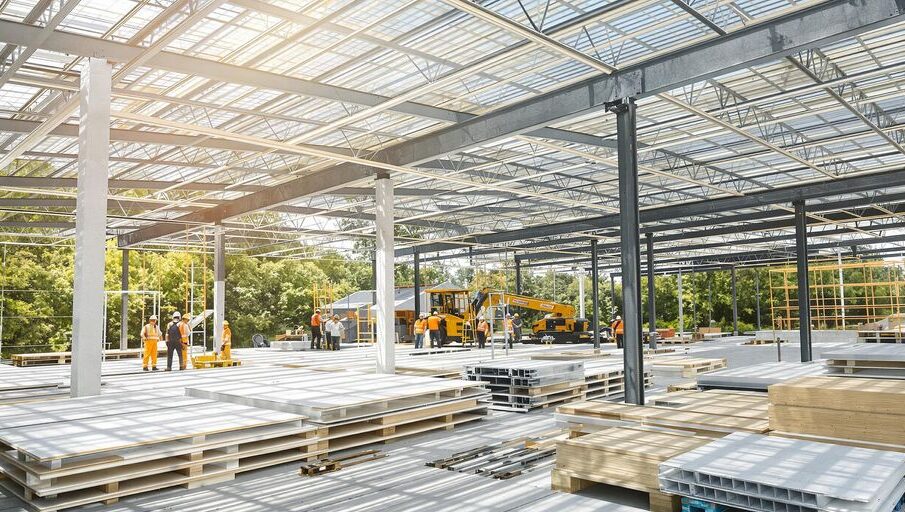
Amorphous Silica Fabrics: A High-Temperature Solution
Amorphous silica fabrics are gaining attention as a reliable replacement for asbestos in high-temperature environments. These fabrics are widely used in industries like shipbuilding, aerospace, and electrical manufacturing because they resist burning, rotting, and mildew. While not typically used in residential construction due to their fiberglass content, they excel in thermal insulation and fire protection applications. Their ability to withstand extreme heat makes them indispensable in industrial settings.
Cellulose Fiber: A Sustainable Insulation Material
Cellulose fiber is a standout choice for those seeking eco-friendly and efficient insulation. Made primarily from recycled paper products, this material is treated with non-toxic chemicals to enhance fire resistance and reduce moisture absorption. Its green credentials are hard to ignore, as it typically contains up to 85% recycled content. Builders and homeowners alike appreciate its affordability and ease of installation, making it a popular alternative to asbestos in residential projects.
Polyurethane Foam: Versatile and Effective
Polyurethane foam has emerged as a versatile option in both commercial and residential construction. Often used in roofing insulation, this spray-applied material combines the properties of plastics and rubber to deliver excellent thermal resistance. Its uses extend beyond construction, appearing in car upholstery, flotation devices, and even theater set designs. The foam’s poor heat conductivity, thanks to its bubble-filled structure, makes it a go-to choice for energy-efficient building solutions. For those prioritizing safety and performance, polyurethane foam is a compelling alternative to traditional asbestos-based materials.
Health and Environmental Impacts of Asbestos-Free Materials
Reducing Respiratory Risks with Safer Materials
Switching to asbestos-free construction materials is a step toward protecting public health. Asbestos fibers, when inhaled, can cause severe respiratory illnesses such as lung cancer, mesothelioma, and asbestosis. By adopting safer alternatives, builders can significantly lower these risks. Materials like cellulose fiber or amorphous silica fabrics provide insulation without the harmful side effects of asbestos. These innovations ensure that workers and occupants are not exposed to dangerous airborne fibers, promoting healthier living and working environments.
Minimizing Environmental Footprints in Construction
The environmental impact of asbestos-free materials goes beyond health benefits. Many of these alternatives are designed with sustainability in mind. For instance, materials like recycled cellulose or natural fibers not only reduce waste but also consume less energy during production. The shift away from asbestos also aligns with efforts to reduce the use of high-energy, resource-intensive materials. This transition helps combat environmental degradation by promoting greener manufacturing processes and reducing pollution.
Promoting Public Awareness on Material Safety
Public education plays a critical role in the adoption of safer construction practices. Many people are still unaware of the dangers posed by asbestos and other hazardous materials. Campaigns aimed at raising awareness can highlight the importance of choosing non-toxic, sustainable options. Educational efforts can also emphasize the long-term benefits of investing in safer materials, both for individual health and the environment. By spreading knowledge, the construction industry can move closer to eliminating harmful materials altogether.
The Role of Legislation in Advancing Asbestos-Free Construction
Global Bans and Their Effectiveness
Over the years, many countries have implemented bans on asbestos use in construction. These bans aim to protect public health by eliminating exposure to a material linked to severe illnesses, such as asbestosis and mesothelioma. Countries with strict bans have seen measurable improvements in public health outcomes. However, enforcement varies widely. While nations like Australia and much of Europe enforce comprehensive bans, others struggle with loopholes and illegal imports. The challenge remains in ensuring that these bans are not just laws on paper but are actively upheld and monitored.
Regulatory Challenges in Developing Nations
In developing countries, asbestos is still widely used due to its affordability and availability. Limited regulatory frameworks and enforcement mechanisms often allow its continued use, despite known health risks. Some of the hurdles include:
- Lack of awareness about the dangers of asbestos.
- Insufficient funding for monitoring and enforcement.
- Dependence on industries that rely on asbestos products for economic stability.
Addressing these challenges requires international cooperation, funding, and education to encourage safer alternatives.
The Push for Stricter Compliance Measures
Even in countries with bans, ensuring compliance is no small feat. Smuggling of asbestos-containing materials and the use of outdated construction stocks complicate the situation. Governments are increasingly turning to measures like mandatory disclosure of materials used in construction projects. For instance, the law mandates manufacturers to disclose information about companies producing asbestos-containing products, enhancing transparency and accountability. Regular audits, penalties for non-compliance, and public awareness campaigns are also being employed to tighten the grip on illegal use.
Green Building Materials as the Future of Construction
Recycled and Upcycled Materials in Construction
Recycling and upcycling are transforming the construction landscape. By using materials like reclaimed wood, crushed concrete, and recycled metals, builders can significantly cut down on waste and reduce the need for new resources. Upcycling, in particular, turns discarded materials into innovative and functional construction products. This process not only saves energy but also helps limit the environmental footprint of construction projects. Additionally, these practices align with sustainability goals, making them an integral part of modern building strategies.
Natural and Renewable Resources for Building
Natural materials such as bamboo, cork, and straw are gaining traction as viable alternatives to traditional building materials. These resources are renewable, biodegradable, and often require less energy to produce. Bamboo, for instance, grows rapidly and can be harvested sustainably, while cork offers excellent insulation properties. Incorporating these materials into construction not only promotes environmental stewardship but also enhances indoor air quality by reducing reliance on synthetic products.
Energy-Efficient Alternatives to Traditional Materials
Energy-efficient materials are paving the way for greener buildings. Products like insulated concrete forms, low-emissivity windows, and advanced insulation materials are designed to minimize energy loss. LEED-certified buildings, for example, showcase how energy-efficient materials can reduce energy consumption by up to 25%, lower water usage, and cut carbon emissions. These innovations not only lower operational costs but also contribute to a more sustainable future for the construction industry.
Technological Innovations Driving Asbestos-Free Solutions
Advanced Manufacturing Techniques for Safer Materials
Modern manufacturing methods are paving the way for safer construction materials. Techniques like precision molding and 3D printing allow for the creation of asbestos-free products that mimic the durability and heat resistance of traditional asbestos materials. These methods not only enhance safety but also reduce waste during production. This shift toward advanced techniques ensures that safer materials are readily available for various applications.
Nanotechnology in Construction Material Development
Nanotechnology is transforming the way we think about building materials. By manipulating materials at the molecular level, researchers have developed innovative solutions that offer strength, flexibility, and thermal resistance without the health risks associated with asbestos. For example, nanomaterials can be used to create coatings that enhance fire resistance or improve insulation efficiency. This field continues to grow, promising safer and more efficient alternatives for the construction industry.
The Role of Artificial Intelligence in Material Selection
Artificial Intelligence (AI) is becoming a game-changer in selecting and optimizing construction materials. AI systems analyze vast amounts of data to recommend materials that meet specific safety, environmental, and performance criteria. In regions like Australia, where pro-safety attitudes dominate, AI tools are increasingly utilized to ensure compliance with strict asbestos regulations. This technology not only simplifies decision-making but also promotes the adoption of safer, asbestos-free alternatives across the industry.
Economic Implications of Transitioning to Asbestos-Free Materials
Cost Analysis of Asbestos Alternatives
Switching to asbestos-free materials often comes with an upfront cost. Many of the safer alternatives, such as cellulose fiber or amorphous silica fabrics, are more expensive to produce compared to asbestos. However, the long-term savings from reduced health liabilities and environmental penalties outweigh these initial expenses. For instance, companies that invest in these alternatives might avoid costly lawsuits tied to asbestos-related illnesses. Moreover, the shift can also lead to reduced insurance premiums, as using safer materials lowers overall risks.
Market Trends in Sustainable Construction Materials
The construction industry is steadily embracing sustainable practices, and asbestos-free materials are a big part of this shift. Eco-friendly options like recycled materials and natural fibers are gaining popularity, driven by both consumer demand and stricter regulations. This trend is creating a new market dynamic where companies offering sustainable solutions stand to gain a competitive edge. Additionally, businesses that adapt early to these changes can position themselves as leaders in the emerging “green construction” market, attracting environmentally-conscious clients and investors.
Incentives for Adopting Safer Building Practices
Governments and organizations worldwide are introducing incentives to encourage the use of asbestos-free materials. These include tax breaks, grants, and subsidies for companies that prioritize safer construction methods. Some programs also offer certifications that enhance a company’s reputation in the market. By taking advantage of these incentives, businesses not only offset the higher costs of safer materials but also gain recognition for their commitment to public health and sustainability. This dual benefit makes transitioning to asbestos-free options a smart financial and ethical choice.
Challenges in Phasing Out Asbestos Globally
Addressing Supply Chain Dependencies
The global reliance on asbestos is deeply rooted in its affordability and availability. Many industries, especially in developing regions, depend on asbestos for its durability and cost-effectiveness. Transitioning to asbestos-free materials requires rethinking entire supply chains, which can be expensive and time-consuming. Breaking these dependencies demands a coordinated effort across industries, governments, and international organizations.
Key steps to address this challenge include:
- Identifying and promoting viable alternatives that match asbestos’s properties.
- Providing subsidies or incentives for industries to switch to safer materials.
- Building international coalitions to regulate and monitor asbestos trade.
Overcoming Resistance from Traditional Industries
Industries that have relied on asbestos for decades often resist change due to the perceived costs and logistical hurdles. This resistance is particularly strong in regions with limited regulations or enforcement. Convincing these sectors to adopt safer practices is a complex task that requires both education and economic incentives.
Strategies to overcome resistance:
- Highlight the long-term financial and health benefits of asbestos-free materials.
- Enforce stricter penalties for non-compliance with asbestos bans.
- Partner with industry leaders to demonstrate successful transitions.
Educating Stakeholders on Long-Term Benefits
Many stakeholders, from policymakers to construction workers, lack awareness of the dangers of asbestos and the benefits of phasing it out. Public education campaigns and targeted training programs are essential to drive change. Without this understanding, efforts to eliminate asbestos may stall.
Educational initiatives could include:
- Training programs for workers on identifying and handling asbestos safely.
- Public campaigns emphasizing the health risks associated with asbestos exposure.
- Workshops for policymakers on the economic and social advantages of asbestos-free construction.
By addressing these challenges head-on, the global community can make significant progress toward a safer, asbestos-free future.
Case Studies of Successful Asbestos-Free Projects
Residential Buildings Embracing Safer Materials
In recent years, residential construction has seen a shift towards asbestos-free materials, driven by growing awareness of health risks. For instance, a housing project in New Zealand replaced traditional asbestos-laden roofing with fiber cement sheets. These sheets not only eliminate asbestos exposure but also provide durability and weather resistance. This move has set a benchmark for safer living spaces.
Key benefits observed in such projects include:
- Improved indoor air quality.
- Enhanced safety for workers and residents.
- Longevity of materials without compromising on cost-effectiveness.
Commercial Spaces Leading the Way in Innovation
Commercial buildings are increasingly adopting innovative, asbestos-free solutions. One notable example is a corporate office in Germany that utilized polyurethane foam for insulation. This material offers excellent thermal performance while being completely safe for occupants. The project also incorporated recycled glass panels, demonstrating a commitment to both safety and sustainability.
Infrastructure Projects Setting New Standards
Large-scale infrastructure projects have also embraced asbestos-free practices. A highway renovation in Canada replaced asbestos-containing asphalt with a new composite material made from recycled plastics and natural fibers. This not only reduced the environmental footprint but also ensured compliance with strict safety regulations. Such initiatives highlight the potential for public works to lead by example in adopting safer construction materials.
Future Trends in Asbestos-Free Construction Materials
Emerging Materials on the Horizon
The construction industry is constantly evolving, and new materials are emerging to replace asbestos in various applications. Some promising options include:
- Amorphous silica fabrics: Known for their resistance to high temperatures and durability, these fabrics are gaining traction in industrial settings.
- Cellulose-based composites: Lightweight and sustainable, these materials are becoming popular for insulation and structural applications.
- Thermoset plastic flour: A versatile alternative used in everything from electrical insulation to automotive parts.
These innovations highlight the industry’s push toward safer and more sustainable choices.
Collaborative Efforts in Research and Development
The development of asbestos-free materials is not a solo endeavor. Collaborative efforts between universities, private companies, and government agencies are driving progress. These partnerships focus on:
- Testing and certifying new materials for safety and performance.
- Sharing knowledge across borders to accelerate innovation.
- Developing cost-effective solutions that can be adopted globally.
Such teamwork ensures that advancements are both practical and widely accessible.
The Vision for a Safer, Sustainable Construction Industry
The ultimate goal is a construction industry free of hazardous materials like asbestos. This vision includes:
- Increased use of renewable resources like bamboo and cork.
- Integration of energy-efficient technologies, such as passive design systems.
- Greater emphasis on recycling and upcycling to minimize waste.
By embracing these trends, the industry can move toward a future that prioritizes both human health and environmental sustainability.
Public and Private Sector Collaboration in Material Innovation
Government Initiatives Supporting Safer Materials
Governments worldwide are stepping up to encourage the use of safer, asbestos-free materials in construction. By offering financial support and incentives aimed at asbestos removal, they’re helping to ease the transition for industries hesitant to adopt alternatives. Tax credits, grants, and subsidies are among the tools used to make safer materials more accessible. Additionally, public agencies are setting an example by mandating the use of non-toxic materials in their own construction projects, showcasing their commitment to public health and sustainability.
Private Sector Investments in Sustainable Solutions
The private sector is also playing a critical role. Many companies are investing heavily in research to develop innovative materials that are both safe and cost-effective. Some firms are even collaborating with academic institutions to explore cutting-edge technologies like nanotechnology and 3D printing. These advancements not only improve the safety of construction materials but also enhance their performance. Private businesses are also leveraging their resources to promote awareness about asbestos-free alternatives, ensuring their adoption becomes a standard practice across the industry.
Partnerships Driving Industry-Wide Change
Collaboration between public and private entities is essential for driving widespread change. Joint ventures and public-private partnerships (PPPs) are emerging as effective ways to fund large-scale projects that prioritize safety and sustainability. For instance, governments may provide regulatory guidance, while private firms contribute technological expertise. Such partnerships often focus on aligning with policies related to facility construction, ensuring compliance with safety standards while fostering innovation. By working together, these sectors can accelerate the shift toward a safer and more sustainable construction industry.
Educational Efforts to Promote Asbestos-Free Construction
Training Programs for Construction Professionals
Education is a key part of moving the construction industry away from asbestos. Training programs tailored for contractors, builders, and other construction workers can make a big difference. These programs should focus on identifying asbestos-containing materials, understanding the risks, and learning about safer alternatives. Hands-on workshops and certification courses can also help professionals apply this knowledge on-site.
Public Campaigns on the Dangers of Asbestos
Public awareness campaigns are vital, especially since many people don’t fully understand how dangerous asbestos can be. These campaigns can include advertisements, community seminars, and even school programs. By explaining the health risks and showing how safer materials are available, these efforts can encourage more people to demand asbestos-free construction. Clear and simple messaging is key to reaching a wide audience.
Incorporating Material Safety in Academic Curricula
Colleges and trade schools need to include material safety in their construction-related courses. Teaching future architects, engineers, and builders about the dangers of asbestos—and the benefits of safer alternatives—can create a new generation of professionals committed to safety. Including case studies, like addressing asbestos risks in schools, can make the lessons more relatable and practical for students.
The Global Movement Towards Safer Construction Practices
International Agreements on Hazardous Materials
Across the globe, countries are coming together to address the dangers posed by hazardous construction materials like asbestos. Treaties such as the Rotterdam Convention have highlighted the need for stricter controls on harmful substances. These agreements aim to create a unified approach, ensuring that materials banned in one country don’t find their way into another. Global cooperation is essential in curbing the use of dangerous materials. However, enforcing these agreements remains a challenge, especially in nations with limited resources or conflicting economic interests.
Cross-Border Knowledge Sharing and Collaboration
Sharing knowledge across borders is a critical step in promoting safer construction practices. Developed nations often lead the way in research and development, creating innovative alternatives to hazardous materials. By sharing these advancements with developing countries, the global construction industry can move toward safer standards. Collaborative efforts include:
- Hosting international conferences to discuss asbestos-free innovations.
- Publishing open-access research on sustainable building materials.
- Establishing partnerships between universities and construction firms worldwide.
These efforts ensure that even smaller economies can access cutting-edge solutions and reduce their dependency on outdated, harmful practices.
The Role of NGOs in Advocating for Change
Non-governmental organizations (NGOs) play a significant role in raising awareness about the dangers of hazardous materials. Groups like the Environmental Working Group and the International Ban Asbestos Secretariat work tirelessly to educate the public and lobby for stricter regulations. Their campaigns often focus on:
- Highlighting the health risks associated with asbestos exposure.
- Pressuring governments to adopt bans and enforce compliance.
- Supporting victims of asbestos-related illnesses through legal and financial aid.
NGOs act as a bridge between the public, policymakers, and industry leaders, ensuring that the push for safer construction practices remains a priority. Their advocacy has led to significant policy changes in many parts of the world, demonstrating the power of grassroots movements in driving global change.
Additional Links
Robert King Mesothelioma Law Services
10 Best Kitchen Faucets For Busy Households
April 5, 2025The Role of Underlayment in Shingle Roofing Systems
April 1, 2025
Comments are closed.
More News
-
Why hard water consumption is bad for your health
March 10, 2025 -
Where to Find Kiln-Dried Firewood in Milwaukee and Waukesha
February 7, 2025







